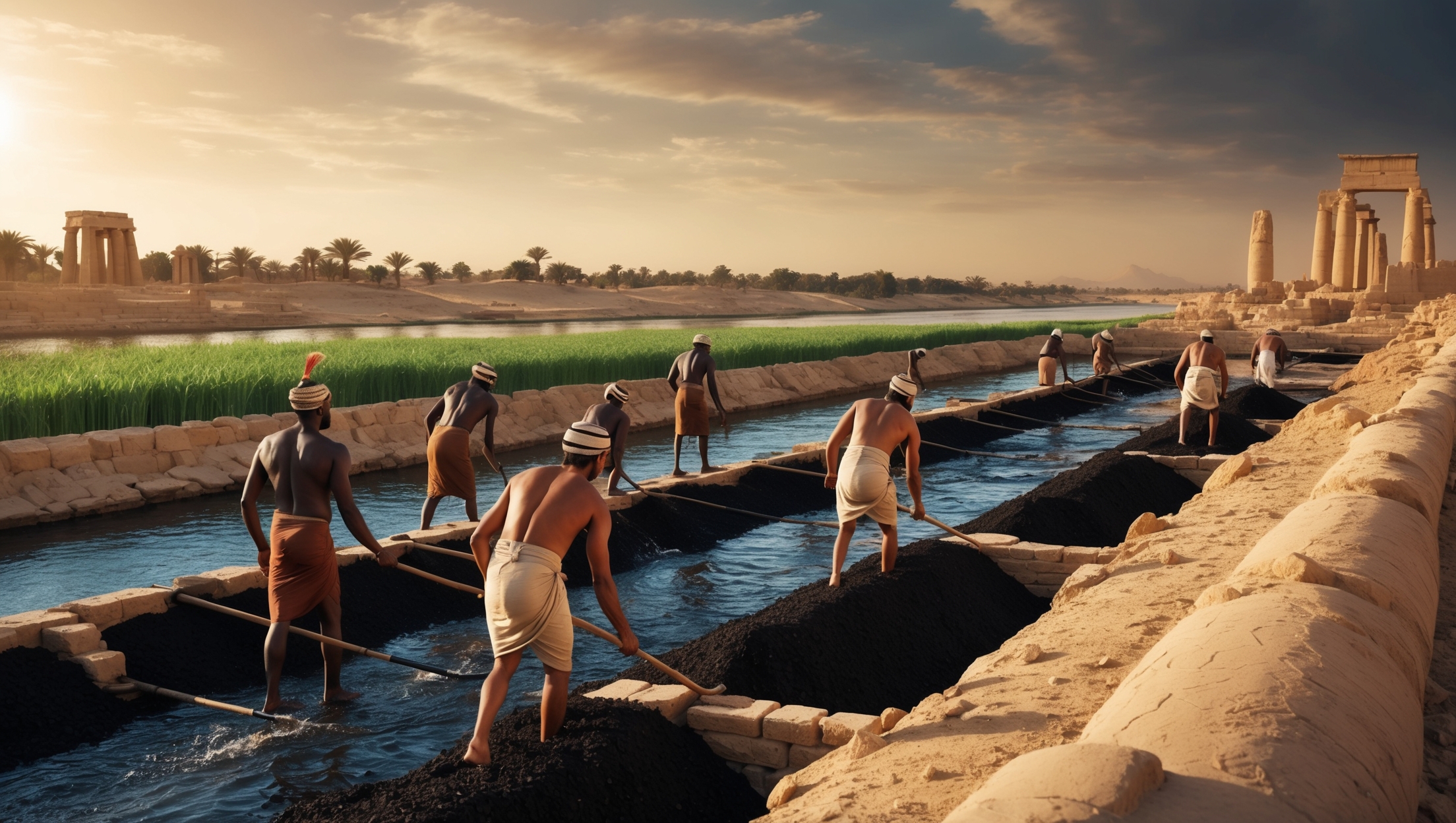Throughout history, humans have recognized the importance of soil moisture for agriculture and have devised innovative methods to measure and manage it. Long before the advent of modern sensors, ancient cultures developed ingenious ways to monitor soil moisture to ensure successful crop growth. In this post, we will explore how ancient civilizations like the Egyptians, Mesopotamians, Chinese, and Incas understood and managed soil moisture, laying the groundwork for the advanced technologies we use today.
Ancient Egyptian Irrigation and Soil Management
The ancient Egyptians were among the first civilizations to develop large-scale agriculture, thanks to the fertile banks of the Nile River. The annual flooding of the Nile deposited nutrient-rich silt and water, which made the soil ideal for farming. However, the Egyptians needed to manage the timing and distribution of water to optimize crop yields.
Nilometers: Measuring Water Levels
The Egyptians used nilometers to measure the water levels of the Nile. A nilometer was a structure—often a stone column or staircase—marked with measurements to track the height of the river. While not a direct measurement of soil moisture, nilometers allowed the Egyptians to predict how much water would be available for irrigation and how saturated the soil would become after the flood. This understanding helped them determine when to plant crops and how much water was needed for different areas.
The Egyptians also constructed an extensive network of canals and basins to control the distribution of water. By managing the flow of water through these systems, they were effectively managing soil moisture across their fields. The ability to predict and control water availability was a significant factor in the success of Egyptian agriculture.
Mesopotamian Irrigation Systems
In Mesopotamia, one of the cradles of civilization, agriculture depended heavily on irrigation from the Tigris and Euphrates rivers. The Mesopotamians faced challenges with both water scarcity and soil salinization, which made soil moisture management particularly important.
Clay Tablets and Field Observations
The Mesopotamians recorded their agricultural practices on clay tablets, including detailed observations of soil conditions and water needs. Farmers would assess the moisture content of the soil by feeling it and observing how well the crops were growing. If the soil was too dry, they would divert water from the river through a system of canals to rehydrate the fields.
The Mesopotamians also understood the importance of field drainage. They built drainage systems to prevent water from stagnating in the fields, which could lead to salt buildup and reduced soil fertility. By managing the water levels in their fields, they were indirectly monitoring and controlling soil moisture to maintain crop health.
Ancient Chinese Agriculture: The Role of Moisture Management
Ancient China also developed sophisticated agricultural practices, particularly during the Zhou and Han dynasties. The Chinese understood the importance of maintaining optimal soil moisture for different crops, such as rice, millet, and wheat.
Moisture Observation Techniques
Chinese farmers relied on a combination of observation and experience to determine soil moisture levels. They would dig small holes in the fields to check the soil’s moisture content by touch and appearance. If the soil formed a cohesive ball when squeezed, it indicated sufficient moisture for most crops. If the soil crumbled, it was a sign that irrigation was needed.
In rice paddies, managing water levels was crucial. Farmers used a system of terraces and gates to control the flow of water, ensuring that the rice fields remained consistently flooded to the right depth. This method allowed them to maintain optimal soil moisture for rice cultivation, which is highly sensitive to water availability.
The Incan Empire: Agricultural Terraces and Soil Moisture Control
The Incan Empire in South America is another example of an ancient civilization that understood the importance of soil moisture management. The Incas farmed in the challenging conditions of the Andes Mountains, where rainfall could be erratic, and the terrain was steep.
Agricultural Terracing
The Incas developed agricultural terraces to manage soil moisture and prevent erosion. These terraces helped retain water, allowing moisture to infiltrate the soil more effectively and reducing runoff. The Incas also built stone channels to direct water from mountain streams to their terraces, ensuring that crops received adequate moisture even during dry periods.
By creating terraces with specific slopes and drainage features, the Incas were able to maintain consistent soil moisture levels across their fields. This innovation not only improved crop yields but also prevented soil erosion, ensuring the long-term fertility of their farmland.
Lessons from Ancient Cultures
The methods used by ancient cultures to measure and manage soil moisture may seem rudimentary compared to today’s technology, but they were highly effective for their time. These early farmers understood that water was a precious resource and that managing soil moisture was essential for successful agriculture. They developed creative solutions—such as nilometers, terraces, and drainage systems—that allowed them to monitor and control soil conditions, ensuring that their crops had the water they needed to thrive.
Modern soil moisture sensors, like Terrestream’s Irrigauge, FieldLink, and FieldHub, build upon the principles established by these ancient practices. Today, we have the advantage of using advanced technology to measure soil moisture with precision and make data-driven decisions. However, the underlying goal remains the same: to understand the needs of our crops and provide them with the right amount of water at the right time.
Conclusion: Bridging the Past and Present
The history of soil moisture management is a testament to human ingenuity and our ability to adapt to challenging environments. From the Nile River’s banks to the terraces of the Andes, ancient farmers developed innovative ways to measure and control soil moisture, laying the foundation for modern irrigation practices.
Today, with advanced tools like Terrestream’s Irrigauge, we can continue this legacy, using technology to optimize irrigation and ensure the health and productivity of our fields. By understanding both the history and the science of soil moisture management, we can make more informed decisions that benefit our farms and the environment.





